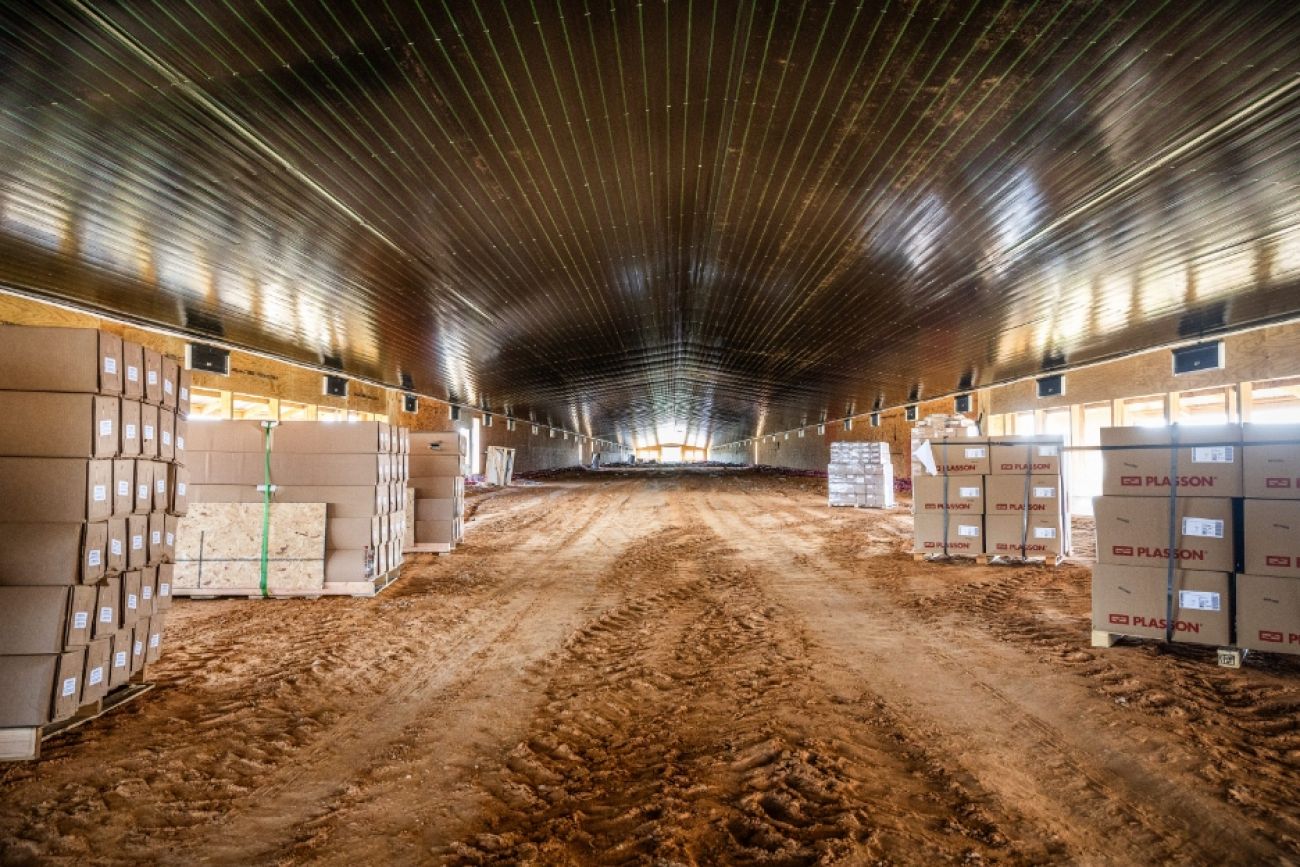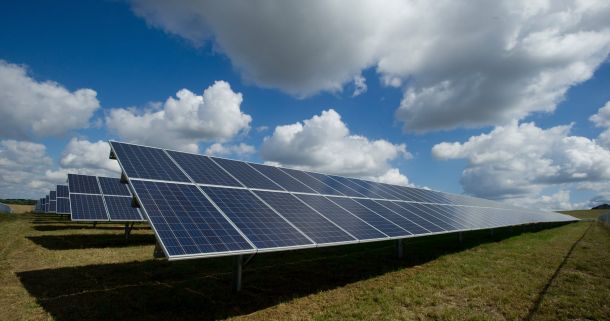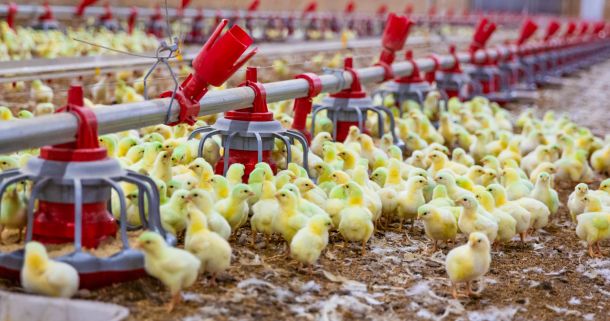The Do’s and Don’ts of Commercial Poultry House Construction

First Financial Bank
Poultry products continue to be in demand. Are you considering building a commercial poultry farm? Get some tips here.
Even as markets adjust to changes in demand, poultry products continue to be popular in the U.S. and beyond. If you are considering building a poultry house in addition to your current farm operations or an entirely new poultry farm, there are some things you should know as you put your plans together. We sat down with Zac Tarlton, Ag Lending Officer and SVP for First Financial Bank, to discuss some of the challenges in the process. As he describes “I’ve been on about every side of the industry except working in the processing plant. I’ve been in GP hatcheries, pullet production, GP hen production, plus I own a broiler farm and a hog multiplier farm. I’ve been in the customer’s shoes. Having spent 14 years in Ag banking, lending on about every type of chicken, turkey and hog house, I’ve seen a lot and experienced the changes in the industry. I’ve seen and experienced the changes in the industry. I can see what’s coming down the pike when another lender may not – and that experience helps me explain to customers the reasons why we do what we do.”
Based on that experience, here are some of the “do’s and don’ts” that you should consider.
Find a site with easy access to water
Water availability is the one of the most important features you’ll need in a site for poultry farm construction. Before you commit to a location, you need to know:
- How much water is available to support your operations?
- What will it take to access that water supply?
- Will the cost to access the supply erase any potential profits?
“I recall a proposed project years ago. The area was known to have very little ground water reserves. There was a customer who wanted to build broiler houses on his home farm. If he would have chosen to build there, he would have had to spend close to a million dollars to run a pipeline over a mile to the nearest county water source. He would also have had to build an on-site storage facility similar to what a municipality has to meet the demand. This was just too expensive to make that location profitable”, says Zac. “It was ultimately cheaper for that customer to procure a site a couple of miles away with a good water source. Essentially, it was more economically feasible to purchase land than it was to purchase water. Water availability is essential.”
Learn what’s under the first layer of dirt before you bid
Whether you are digging to access water or just to put in the foundation essentials for the poultry house, you need to know what’s under that top soil on the site. “If you are walking the site and see large boulders peeking through, that is a red flag. Excavation is expensive enough when you have optimal soil conditions. Blasting and digging through sandstone or granite can kill your profitability,” says Zac.
Know what the regulations are for your location
There are many federal, state and local rules and regulations around poultry farming. Some of these address:
- Drainage, sewage, and overall waste management
- Use of chemicals
- Setback requirements and required distances from other properties
These regulations and requirements continue to evolve as our urban and suburban areas continue to encroach on a once rural landscape.
Work with your integrator
Your integrator’s production managers are familiar with requirements and they’ll do a lot of the legwork for your project. Don’t forget to take advantage of them early and often for guidance for what is best for your project. This can also help you stay compliant with your agreement with the integrator.
Don’t forget to check with your state’s poultry federation
The poultry federation for your state can provide guidance on the best management practices and requirements for your state. In particular, they can help you better understand what are the current standards for things like setbacks and distances – and potentially what changes may be on the horizon. “For example, approximately 15 years ago in North Carolina, 500 feet was a best management practice. Now it is 1,500 feet from a non-owned residence (for example from a neighbor who is not your family member). If you are close to an urban or suburban area this can be problematic to find,” says Zac. “In Georgia, some setbacks are minimally a 200 acre parcel. If you don’t already own a large enough property, you’ll have to purchase one and that can require a large capital outlay.”

Don’t bid on a site until you know the essentials
If you bid or buy before you know the essentials of water access, soil composition and regulations/requirements, your finances are at risk. “Someone in New York was deep into their site plans and development before they started asking for bids for water wells. He discovered that the water table was very deep underground and there was very little aquifer. It would have been upwards of $500,000 to build a large enough water storage facility to handle the water demand on that site and it just wasn’t viable,” said Zac.
Don’t rush your project planning
“We see it often. People rush to try to get qualified for a loan with bare bones bids they’ve received because they want to get their project started, but then once approved for that bare minimum plan, they start including new details and ‘small add-ons’. A few hits of $5,000 here and there add up quickly and blow the budget – and the potential for profit,” says Zac. “Slow down and consider all the different options first and work your budget. You want a positive return on your investment.”
Do your homework when picking a builder
You need someone who is an experienced poultry house builder to implement your plans. They should be a reputable builder who understands what you need about the:
- region’s regulations and standards;
- requirements for the type of house(s) you need (broiler, egg, turkey, swine, etc.); and,
- experience and insight to build in flexibility for potential changes and needs.
It may feel like overkill to look forward into the future but the builder should relay to the grower why that should happen. “Agricultural and environmental engineers are planning for this. You see it especially on the broiler side where they are designing the strength of trusses for heavy snow loads and pre-framing side and end walls for future cool pad and tunnel fan expansions,” says Zac.
Don’t underestimate the need for automation and technology
Automation and technology needs to be part of your planning from day one – and beyond. Basically, all feeding, watering, and cooling processes are automated. Computerized houses are keeping the temperatures and wind chill effects within one to two degrees of the optimal. “Most poultry houses have better climate control equipment than many of our own homes,” says Zac.
You’ll also want to consider what other technology may improve your productivity and ROI. Zac states: “As an example, for table egg farms, they make automated egg packers that start at about $30 – $40k to acquire. It takes a farmer 8-10 hours a day to pack 30,000 eggs by hand but the machine only takes 2-3 hours to do that number. This is a no brainer. As Artificial Intelligence improves, so will the processes”.
Plan for now and later
The industry is learning and evolving. You’ll want to plan for what could be based on those changes, but not so far out that it blows your budget. Zac shared, “For example, I put in an extra fan in my chicken house for use now and in the near feature. But we also added rough-ins for other fans that could be added down the road. Chickens have been growing faster than ever due to successful breeding programs. The average daily weight gain seems to increase with every year that passes. Everything is measured and managed. Larger faster growing chickens means more heat production – so more fans are needed to displace that heat and keep the birds comfortable.”
You’ll also want to plan for your technology to be expandable or upgradeable. According to Zac, “You can spend a lot of money on a poultry house that’s designed for today. Unless you plan for expansion, you won’t have the capacity to grow for the future.”
Use your resources wisely
Work with your trusted advisors and experienced people like the lenders at First Financial Bank to put together plans that will help you be successful. They can work with you to better understand what is important now, while supporting your efforts for the future – and doing it within a budget that can more likely result in a solid return on your investment.
Want to discuss your building plans? Let’s chat!

When Refinancing Poultry Debt Makes Sense
Thinking of refinancing your poultry debt, but aren’t sure it’s a smart idea? There’s more to refinancing than just interest rate adjustments.

Solving the Puzzle of Poultry Farm Financing
Everyone always asks me what they need in order to borrow money. They also ask if they can make money and most of the time the answer is “It depends.”

Key Trends for Commercial Poultry Farmers to Watch
What are some of the key trends in poultry farming? Check it out.

